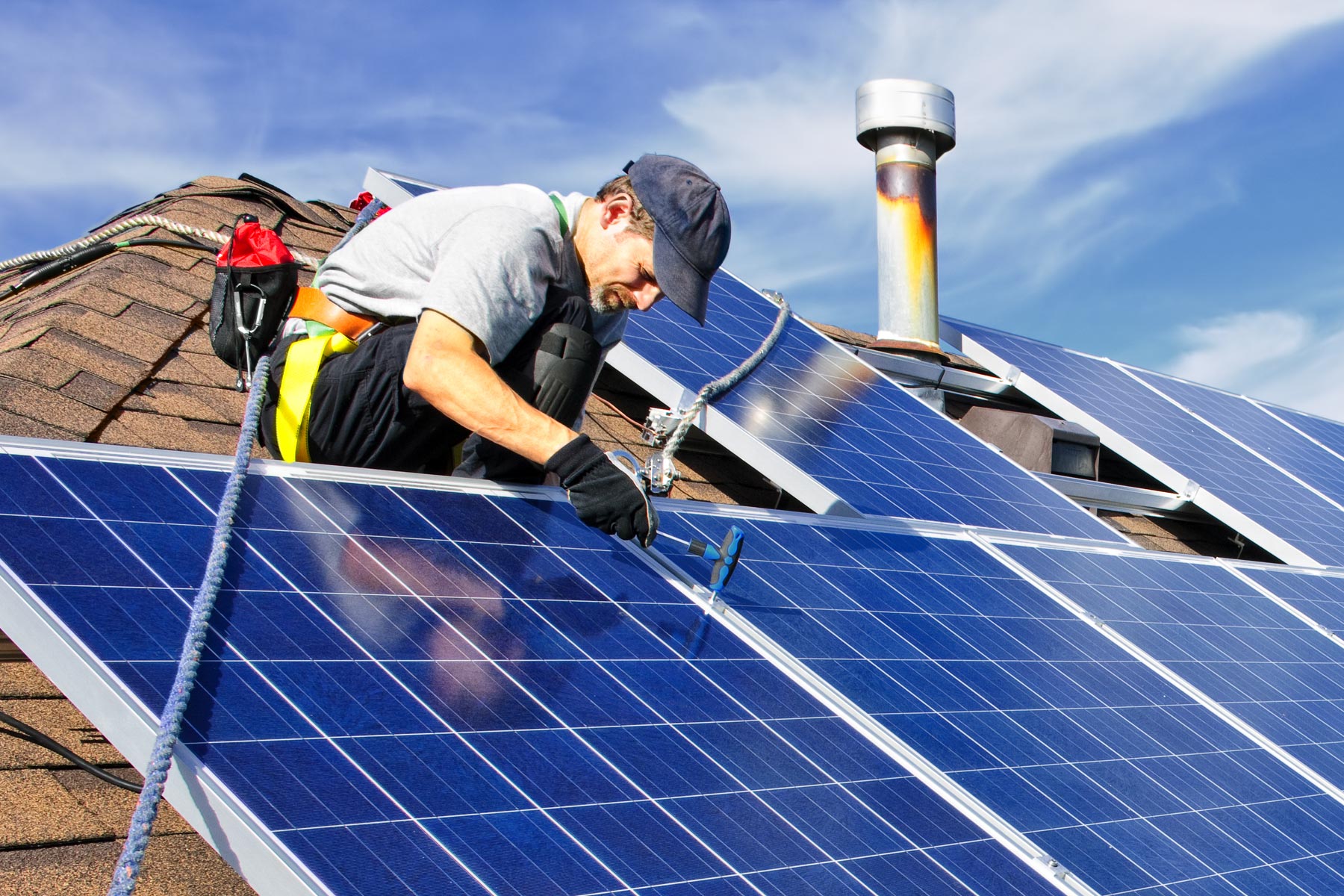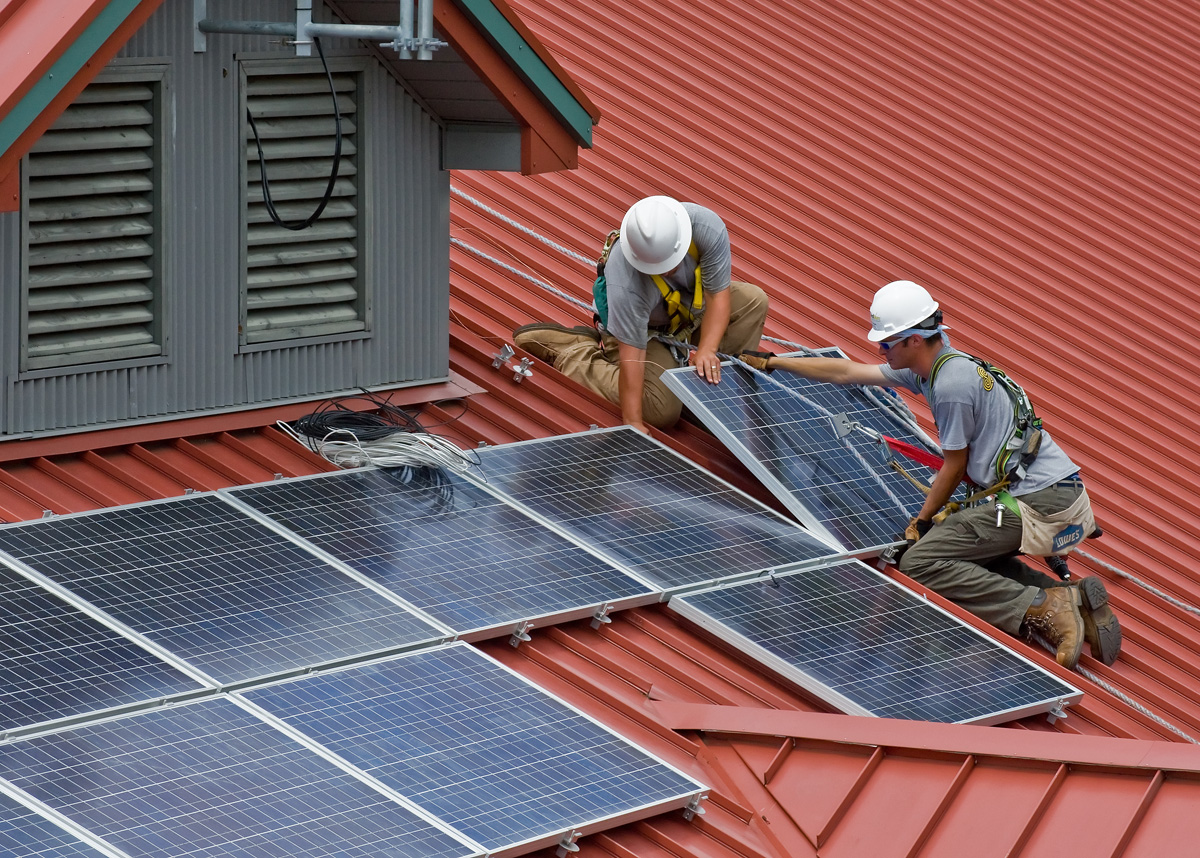Home Solar Energy Systems: Comparing DIY Solar Panel Installation Against Professional Services
Solar Technicians Near Me: Energy-Efficient Solar Solutions For Services Help In Reducing Functional Costs And Promote Sustainability
Kinds Of Industrial Solar Panels
When diving into the world of commercial solar panels, it resembles going into a dynamic market filled with varied alternatives, each assuring to harness the sun's unrelenting energy in its own special method. Have you ever questioned why some panels seem more effective or well-suited for particular rooftops than others? The answer lies in the extremely type of photovoltaic panel chosen.
Monocrystalline Solar Panels
Envision a panel born from a single crystal of silicon-- smooth, consistent, and effective. That's the essence of monocrystalline solar panels. Understood for their high effectiveness and durability, these panels frequently boast a deep black appearance, practically like a midnight canvas capturing every photon. Companies that require optimal power output in limited space frequently gravitate towards this type. The journey to develop these panels is complex, making them a bit steeper on the preliminary investment ladder.
Polycrystalline Solar Panels
On the other hand, polycrystalline photovoltaic panels resemble a mosaic of silicon fragments, fused together in a less uniform pattern. They sparkle with a bluish hue, reflecting their multi-crystal makeup. While they generally offer somewhat lower effectiveness than their monocrystalline cousins, they make up for it with a more wallet-friendly cost. For stretching commercial rooftops where area isn't a pressing concern, these panels supply an engaging balance between expense and performance. Ever noticed how a patchwork of blue tiles can illuminate a dull roof? That's polycrystalline doing its quiet magic.
Thin-Film Solar Panels
Then there's the chameleon of the solar world: thin-film photovoltaic panels. Unlike the stiff silicon structures, these panels are light-weight, flexible, and can be used to surfaces traditional panels can't touch. Their sleek design whispers possibilities-- curved exteriors, irregular roofs, even building-integrated photovoltaics. Yet, this flexibility features a compromise: generally lower performance and a shorter life-span. Still, for specific business applications, particularly where looks meet development, thin-film panels are the dark horse worth considering.
Comparison Table of Commercial Photovoltaic Panel Types
| Type | Performance | Cost | Appearance | Perfect Use |
|---|---|---|---|---|
| Monocrystalline | High (15-20%) | Higher | Black, uniform | Minimal space, high output |
| Polycrystalline | Moderate (13-16%) | Moderate | Blue, speckled | Big roofs, cost-sensitive |
| Thin-Film | Lower (10-12%) | Lower | Varies, flexible | Innovative styles, versatile surface areas |
Picking the Right Panel: What Matters A lot of?
Is it efficiency? Durability? Or possibly the aesthetic impact? Sometimes, it's a blend of all 3. For example, one industrial home owner I know chose thin-film panels not because they yielded the greatest wattage, but since their structure's curved roof required flexibility-- proof that the "finest" panel depends heavily on the task's unique demands.

So, what's your industrial rooftop whispering to you? Are you chasing raw power or architectural sophistication? The diverse kinds of industrial photovoltaic panels make sure there's a match waiting-- if only you listen closely.
Planning the Layout: More Than Just Panels on a Roofing
Think of a chessboard. Each photovoltaic panel is a piece that should be tactically put to capture sunshine with surgical precision. The installation process for business planetary systems often begins with a detailed website assessment. Professionals analyze roofing orientation, shading patterns, and structural stability. Did you know that a slight variance in panel angle can slash effectiveness by as much as 15%? It's not just about slapping panels onto a rooftop; it's a complicated puzzle that demands foresight and precise preparation.
Step-by-Step Installation Breakdown

- Initial Site Study: Surveyors measure the home and gather data on sunlight direct exposure throughout the year.
- Design Stage: Engineers draft a tailored layout, factoring in load-bearing limits and electrical needs.
- Allowing Process: Navigating community approvals can be labyrinthine and time-consuming.
- Mounting System Installation: The backbone of the system, this structure needs to withstand weather extremes without compromising panel alignment.
- Panel Positioning: Panels are secured with accuracy; each connection is checked rigorously to prevent energy loss.
- Electrical Wiring: Runs from the arrays to the inverter should be carefully insulated and protected.
- System Testing: Before flipping the switch, thorough efficiency checks guarantee every cell works harmoniously.
Structural Factors to consider: When the Roof Informs You No
Not all commercial roofings are solar-friendly. Sometimes, the structure groans under the idea of included weight. It's not unusual for installers to encounter roofing reinforcement needs. A misjudged weight distribution can lead to costly repair work or system failure. For flat roofings, ballasted mounting systems-- utilizing heavy materials to secure panels without roofing penetration-- provide a creative workaround, however they demand exact estimations to avoid moving or water pooling.
Expert Tips for a Smooth Installation
- Carry out a thermal imaging scan to find covert roofing weaknesses before setup.
- Select premium flashing products to prevent water ingress around installs.
- Strategy avenue routes early; avoid future interference with heating and cooling systems or pipes.
- Think about panel orientation fine-tunes for seasonal sun path modifications, not just peak summer season.
Why Timing and Weather Condition Matter More Than You Believe
Morning fog or unexpected afternoon storms can turn a multi-day installation into a logistical nightmare. For industrial systems, scheduling around regional weather condition patterns is important to prevent setup delays. However here's a secret: some installers utilize drone technology to monitor site development and ecological conditions in real-time, permitting swift adjustments to the task timeline. This blend of Solar Panel Fitting Experts tradition and innovation maximizes efficiency and makes sure the system is functional earlier.
Unlocking the Power: Why Commercial Solar Panels Matter
Think of a sprawling business complex, its roofing system sparkling with photovoltaic panels absorbing the sun's unrelenting energy. This isn't simply a beautiful photo-- it's a strategic move that equates to major functional strength. Why do smart business flock toward business solar panels? The answer lies below the surface area of simple energy savings.
More than Just Lower Costs
Yes, decreasing electrical power expenses is a headline advantage, however the story dives deeper. Business solar installations function as a financial anchor, supporting energy expenditures versus the unforeseeable waves of market fluctuations. Picture this: a production plant's electrical costs spikes due to an abrupt surge in demand, yet their solar variety cushions the blow, keeping operations smooth and costs foreseeable.
Environmental Trustworthiness that Pays Dividends
In today's eco-conscious market, the green qualifications of a service can sway clients and partners alike. Utilizing solar power sends an effective message-- one that resonates with stakeholders who value sustainability. It's more than a badge; it's a beacon that can open doors to new chances and collaborations.
Technical Edge and Effectiveness
One neglected gem in business photovoltaic panels is their ability to integrate with smart energy management systems. This synergy allows companies to monitor and optimize energy usage in real-time, squeezing out every watt of performance. It resembles having a watchful energy steward working 24/7, ensuring resources aren't squandered and operations stay lean.
Financial Flexibility: Beyond the Apparent
Companies typically hesitate, concerned about in advance investments. Savvy enterprises comprehend that business solar panels can be structured through innovative financing models that spread costs and speed up return on investment. This strategic approach can transform a significant upfront expense into workable, predictable expenditures over time.
Expert Tips for Taking Full Advantage Of Advantages
- Conduct a comprehensive site assessment: Pinpoint the perfect panel positioning to maximize sunlight exposure, representing seasonal changes.
- Use tiered inverter systems: This improves system strength-- if one inverter dips, others keep the energy flowing, minimizing downtime.
- Take advantage of energy storage options:
- Consider battery integration to harness kept solar power during peak need or blackouts, improving operational connection.
- Stay ahead with predictive analytics:
- Usage data-driven insights to prepare for maintenance needs and prevent unforeseen dips in efficiency.
What's the Catch?
Let's face it-- setting up business photovoltaic panels isn't as basic as snapping fingers. Browsing the labyrinth of installation logistics, roofing system stability assessments, and energy output forecasts needs a sharp eye and precise planning. Does your roof angle capture enough sunlight throughout the year? Are shading and weather condition patterns represented? These concerns can make or break the efficacy of the system.
| Benefit | Effect | Expert Insight |
|---|---|---|
| Energy Expense Decrease | Long-lasting functional cost savings | Net metering can magnify savings by exporting surplus energy. |
| Brand Sustainability | Stronger market placing | Visible solar arrays act as a real-time ecological statement. |
| Energy Independence | Decreased vulnerability to grid failures | Coupling with battery storage enhances backup power capabilities. |
Browsing the Intricacies of Commercial Solar Panel Implementation
Envision a vast rooftop, basking under the relentless sun, all set to be changed into a powerhouse of green energy. Below this promising vision lies a maze of intricacies that can journey up even the most experienced installers. One key hurdle revolves around site assessment. It's not practically slapping panels on a roofing system; it's about decoding the story the structure tells. Will the roofing system sustain the added weight? What about shadows cast by neighboring structures or trees that alter with the seasons? These elements can quietly mess up the efficiency of a system if ignored.
Structural and Ecological Considerations
Business buildings often have varied architectures, which implies no 2 solar panel installations are the same. A flat roof might appear perfect, but can it deal with snow loads or heavy rains without jeopardizing stability? On the other hand, a sloped roofing system may provide angle challenges that decrease solar irradiance. Beyond the physical, environmental components require regard. Dust build-up, bird droppings, and pollen are silent effectiveness killers. Comprehending local environment nuances can spell the difference in between peak performance and underwhelming output.
Allowing and Grid Affiliation: The Invisible Maze
When it comes to hooking an industrial planetary system to the grid, the documentation marathon starts. It's a dance between energies, municipalities, and sometimes federal bodies, each with their own tempo. Hold-ups and unexpected requirements can stall development forever. Have you ever questioned why some tasks extend on for months? The answer frequently lies concealed in this bureaucratic web. Expecting these procedural intricacies upfront can save weeks, if not months, of downtime.
Professional Tips for Smoother Release
- Conduct multiple shading analyses at different times of the year to forecast seasonal efficiency dips.
- Engage structural engineers early to assess roof load capacities and suggest supports if required.
- Develop strong interaction channels with regional utilities to preempt delays in grid interconnection approvals.
- Leverage advanced modeling software that simulates environmental impacts over the system's lifespan.
- Prepare for modular scalability to accommodate future expansion without significant overhauls.
Financial Forecasting Beyond Preliminary Costs
It's tempting to focus purely on in advance financial investment, but business solar projects frequently face unpredicted expenditures. Surprise expenses prowl in system optimization tweaks, unanticipated structural supports, and even extending timelines due to administrative slowdowns. A savvy developer always integrates in a contingency buffer. This financial flexibility ensures the project doesn't buckle under the weight of unexpected turns.
| Typical Deployment Element | Prospective Problem | Proactive Method |
|---|---|---|
| Site Gain access to | Limited or harmful locations | Pre-installation site walkthroughs and risk assessments |
| Equipment Shipment | Logistical delays due to oversized parts | Coordinate with suppliers for staged deliveries |
| Weather condition | Unanticipated storms or heatwaves | Flexible scheduling and real-time weather condition tracking |
Releasing commercial solar panels isn't a linear journey; it's a vibrant puzzle requiring foresight, adaptability, and a deep understanding of both innovation and surface. The reward? A resistant system that not only powers a service but likewise champions sustainability in a noisy, fossil-fueled world.